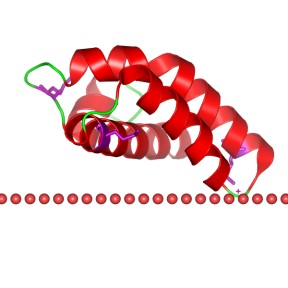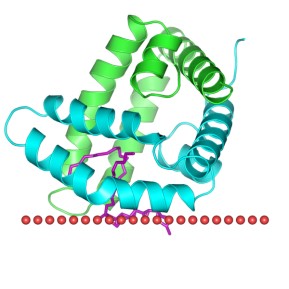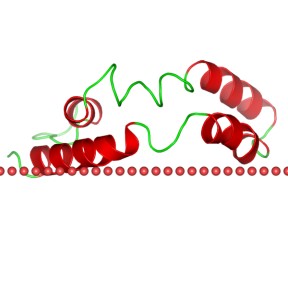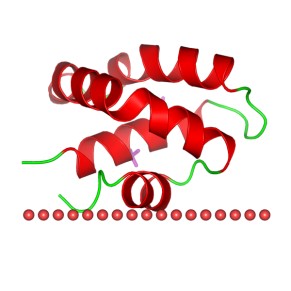Mempro™ Saposin Production Using Virus-Like Particles
Creative Biostructure provides custom Mempro™ saposin production in advanced virus-like particles system.
Saposin is a small, heat-stable glycoprotein family that contains four small glycoproteins: saposin A, B, C, and D. The four saposins are derived from a common precursor protein named prosaposin, and are structurally similar to one another. Prosaposin is a 70kD glycoprotein that contains 4 domains, each domain for one saposin. Prosaposin can be digested into saposin A, B, C, and D within lysosome. All saposins have about 80 amino acid residues and contain one conserved prolines in identical positions, six cysteines, and a glycosylation site. Saposins are lysosomal proteins, and are needed for hydrolysis of sphingolipids by certain specific lysosomal hydrolases. Despite of the structural similarities, each saposin have different model of activation and specificity of sphingolipid hydrolases.

Saposin A

Saposin B

Saposin C

Saposin D
Virus-like particles (VLPs) have been widely used in biological research and production for a quite long time, especially in vaccine development and production. VLPs are organized subunits which are self-assembled from viral structural proteins. VLPs behave the same as native virus, but lack of genetic materials which means they are non-infectious. Various virus families have been reported to produce the VLPs from the components, including Parvoviridae, Flaviviridae, Retroviridae, etc. The self-assembly of VLPs can be performed by expressing the viral structural proteins, such as Caspid and Envelope, in the host cells. Multiple host systems have been reported to produce VLPs successfully including: bacteria (E. coli), yeast, insect cells, mammalian cells and plant cells.
With years of experience in membrane protein production, Creative Biostructure now can provide high yield, stable and high purity saposin glycoprotein production using VLPs. We will obtain particles (VLPs that contain high concentration of specific membrane proteins within their construction) by co-expressing the virus structural core polyproteins along with the target saposin glycoprotein in Eukaryotic expression systems. The core polyproteins will perform the budding-off of lipoparticles with expressed target captured inside its construction from the eukaryotic plasmid membrane. And the lipoparticles will be harvested from the surface of cells. The entire isolation is free from detergents and mechanical disruption. Through this way, we can obtain the saposins with their orientation of membrane proteins and structure remains native and complete.
Creative Biostructure also can provide various other native or recombinant membrane protein production services using multiple techniques. Welcome to contact us for more details.
Reference:
A.Roldão, et al. Virus-like particles in vaccine development.Expert Rev. Vaccines, 2010,9(10): 1149-1176.
Kishimoto Y, Hiraiwa M, O'brien J S. Saposins: structure, function, distribution, and molecular genetics [J]. Journal of lipid research, 1992, 33(9): 1255-1267.